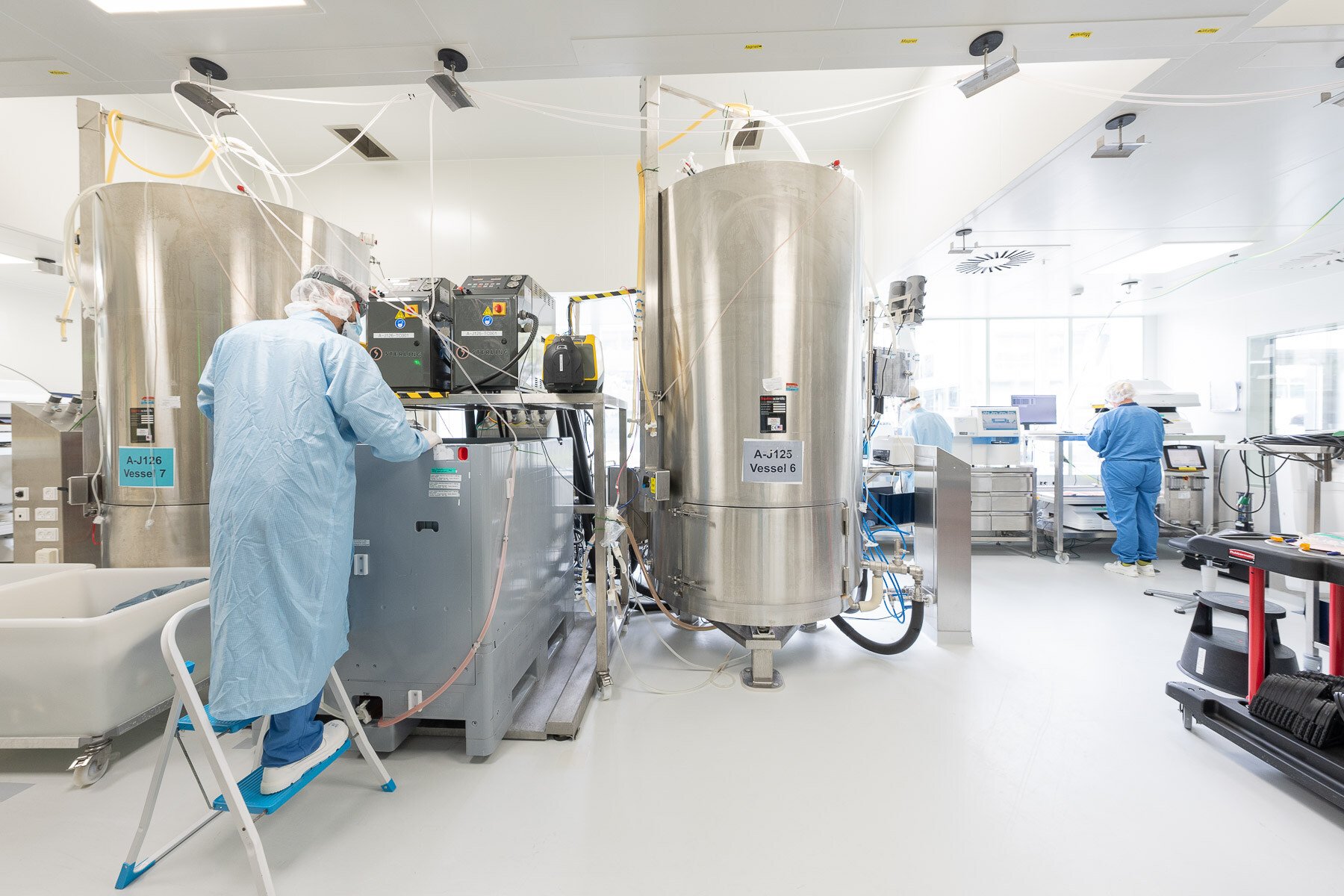- Case Study -
Diversifying Single-Use Technology with Cytiva XDR Bioreactors
Bioreactor Process Transfer: Mastering the Challenges of Upstream Bioprocess Scale-Up and Parameter Control for Antibody Drug Product.

The Challenge
AGC Biologics is a global leader in the use of single-use bioreactors systems, offering the second largest collection of disposable bioreactor capacity in the industry. These production bioreactors can be used concurrently to generate large amounts of biopharmaceutical product fast. With this technology AGC Biologics offers flexible bioreactor configuration capabilities to developers as well, allowing us to run multiple 2,000 L bioreactors in tandem to scale up from 2,000 L to 12,000 L (depending on product stage and needs).
The task was to show that the Cytiva Xcellerex Disposable Reactor (XDR)’s can be used just as well as the Thermo Single-use Bioreactors (SUBs) in AGC’s production process. This strategic move was essential to diversify the supplier pipeline and respond to an increase in production demands while ensuring that process integrity and quality were not compromised.
The complexity of the challenge was multilayered, involving both scale-dependent and scale-independent parameters. Scale-independent parameters, such as pH, temperature, dissolved oxygen, and seeding viable cell density (VCD), had to remain constant across different bioreactor scales to ensure process consistency. Conversely, scale-dependent parameters like volumetric mass transfer coefficient (kLa), tip speed, and power per unit volume are sensitive to changes in bioreactor type and scale, necessitating careful adjustment and monitoring. Additionally, transitioning to a new bioreactor brand introduced variables such as differences in film composition, bag properties, and process regulation capabilities that could potentially affect the outcome.
The AGC Biologics Solution
The AGC Biologics team employed a comprehensive, methodical approach to process transfer. Initial steps included risk analysis on film composition with comprehensive data from suppliers and considerations about agitation setup, bag sparging capabilities, gas Mass Flow Controller setup, PID regulation setup leading to verification in pilot scale studies aimed at confirming the chosen process parameters within the Cytiva XDR system to match the small-scale data and large-scale Thermo SUB production data. These studies were crucial for confirming the chosen process settings and for pinpointing necessary adjustments.
A significant part of the solution was the integration of advanced monitoring tools. CO2 sensors were incorporated to provide real-time data on CO2 levels, a critical parameter in bioprocessing that affects cell growth and product quality. This tool was instrumental in providing real-time data and a method for control of air-sparging so the existing process parameters could be matched.
Pilot studies were performed for both the mAb and bi-specific antibody processes in the 200 L Cytiva XDR, which is representative of the 100/500/2,000 L Cytiva XDR. Parallel runs were conducted using 2 x 5 L bioreactors as control and satellite bioreactors. The data from the bioreactors were compared daily in terms of viable cell density, viability, titer, and metabolites, which were then benchmarked against the data from the 2,000 L Thermo SUB.
The Results
The pilot studies in the Cytiva XDR bioreactor were highly successful. For both processes (the mAb and bispecific antibody) detailed data comparison across the 200L Cytiva XDR, the 5 L control bioreactor, and the 2,000 L GMP Thermo SUB demonstrated that the new system met all benchmarks for viable cell density, viability, integral viable cell count (IVC), and titer, indicating successful transfer of the process to the Cytiva XDR system.
The real-time CO2 monitoring also proved effective, allowing the team to maintain optimal culture conditions by adjusting aeration rates in response to CO2 levels, thus avoiding adverse effects on cell growth. The online and offline CO2 values showed comparability during the upstream process. For instance, the data was comparable for the mAb, although during the bispecific antibody processes, a drift between the online and offline value was observed after a shift in temperature within the upstream process.
The integration of the Cytiva XDR system not only addressed the initial capacity enhancement goals but also solidified the AGC platform and helped introduce more real-time sensor technology. Furthermore, the successful implementation of the new bioreactor system has set a precedent for future transitions, promising the team’s ability to pursue upgrades and optimizations for the client’s product and profitability.
The strategic foresight in adopting the Cytiva XDR and the meticulous execution of the transition plan underscored a commitment to maintaining the highest standards of quality and efficiency. As a result, the process is now better positioned to meet both current and future production demands. AGC Biologics continues to innovate and pioneer process improvement with state-of-the-art technology and rigorous methodology.





